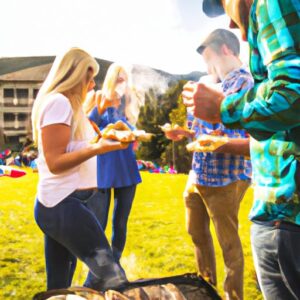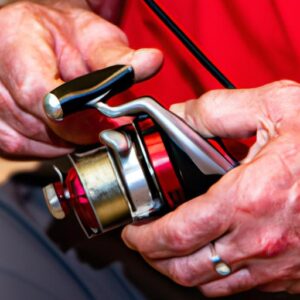Camping trips offer an escape from the hustle and bustle of daily life, allowing us to reconnect with nature and indulge in the simple joys of outdoor living. However, one crucial aspect that often gets overlooked is how to keep our food cold and safe during these excursions. In this comprehensive guide, I will walk you through essential tips and DIY solutions to ensure your food remains fresh, delicious, and free from harmful bacteria throughout your camping adventure.
Introduction
A. Importance of Keeping Food Cold While Camping
When we venture into the wilderness, the absence of refrigeration facilities poses a challenge in preserving perishable food items. Properly storing and keeping food cold is not only a matter of convenience but also crucial for our health and safety. By maintaining safe food temperatures, we can prevent the growth of harmful bacteria that may cause foodborne illnesses and spoilage.
B. Impact of Improper Food Storage on Health and Safety
Improper food storage while camping can lead to a range of issues, from mild discomfort to severe health risks. Consuming spoiled or contaminated food can result in food poisoning symptoms like nausea, vomiting, diarrhea, and stomach cramps. Moreover, exposure to warm temperatures can accelerate bacterial growth, putting you at a higher risk of foodborne illnesses. Therefore, taking proactive measures to keep your food cold is essential for safeguarding your well-being during your camping experience.
Now that we understand the significance of keeping our food cold while camping, let’s delve into the practical tips and techniques that will ensure your meals are fresh, safe, and enjoyable. So, pack your cooler, gather your camping gear, and let’s embark on this journey together to master the art of keeping food cold while camping.
Understanding the Challenges
A. Lack of Refrigeration Facilities in Camping Sites
When we set out on a camping adventure, we embrace the simplicity of living amidst nature. However, this means leaving behind the comforts of modern refrigeration. Camping sites typically lack refrigeration facilities, making it crucial for us to find alternative methods to keep our food cold. Without a reliable cooling solution, our perishable items may quickly spoil, compromising their taste and safety.
B. Risks of Spoilage and Bacterial Growth in Warm Temperatures
Warm temperatures create an ideal environment for the rapid multiplication of bacteria and the spoilage of food. When exposed to heat, perishable items such as meat, dairy products, and fruits become more susceptible to bacterial contamination and accelerated deterioration. Consuming spoiled or contaminated food can lead to foodborne illnesses, putting a damper on your camping experience and potentially causing serious health issues.
To combat these challenges, we need to equip ourselves with the knowledge and techniques necessary to keep our food cold and safe. In the upcoming sections, I will share practical tips and DIY solutions that will help you overcome the lack of refrigeration facilities and prevent the risks of spoilage and bacterial growth. By implementing these strategies, you can ensure the freshness and quality of your food throughout your camping trip. So, let’s dive in and discover how to conquer these challenges together!
Essential Tips for Keeping Food Cold
Keeping your food cold while camping requires strategic planning and smart techniques. Here are some essential tips to ensure your food remains chilled and safe throughout your outdoor adventure.
A. Choosing the Right Cooler
Selecting the right cooler is the foundation of successful food storage during camping trips. Consider the following factors when choosing your cooler:
-
Insulation and Ice Retention Capacity: Look for a cooler with excellent insulation properties and a long ice retention capacity. This will help maintain colder temperatures for an extended period, keeping your food fresh and safe.
-
Size and Portability: Opt for a cooler size that suits your needs and is easy to transport. Remember, a larger cooler may offer more storage capacity, but it can be cumbersome to carry around. Find the right balance between size and portability.
B. Preparing Food for Storage
Properly preparing your food for storage is crucial to maintain its freshness and prevent contamination. Follow these tips:
-
Proper Packaging and Sealing Techniques: Use airtight containers, resealable bags, or vacuum-sealed pouches to prevent air and moisture from entering your food packages. This helps to preserve their quality and reduce the risk of spoilage.
-
Minimizing Air Exposure: When packing your cooler, eliminate excess air space by tightly packing your food items. This reduces the chances of temperature fluctuations and keeps everything colder for longer.
C. Effective Ice Management
Mastering ice management is key to keeping your food cold while camping. Consider the following techniques:
-
Using Block Ice Instead of Cubes: Block ice melts at a slower rate than ice cubes, providing more extended cooling. Invest in block ice or freeze water in large containers to create your own blocks.
-
Layering Ice and Food Strategically: Place a layer of ice at the bottom of your cooler, followed by a layer of food, and then repeat the process. This arrangement ensures even cooling and prevents cross-contamination between raw and cooked items.
D. Utilizing Natural Cooling Methods
Harnessing the power of nature can contribute to keeping your food cold in a sustainable way. Try these natural cooling methods:
-
Selecting Shaded and Cool Storage Locations: Position your cooler in a shaded area away from direct sunlight. This helps maintain lower temperatures, reducing the risk of food spoilage.
-
Utilizing Natural Water Sources for Cooling: If available, consider submerging your cooler in a nearby stream, lake, or river. The cool water will act as a natural refrigerant, keeping your food chilled.
E. Smart Meal Planning
Strategic meal planning can minimize the need for refrigeration while camping. Consider these tips:
-
Opting for Non-Perishable and Dehydrated Foods: Pack foods that do not require refrigeration, such as canned goods, dried fruits, and jerky. These items have a longer shelf life and are less prone to spoilage.
-
Consuming Perishable Items First: Prioritize consuming perishable items, such as fresh fruits and vegetables, dairy products, and cured meats, at the beginning of your camping trip. This reduces the risk of spoilage as the days progress.
By following these essential tips, you can ensure that your food stays cold and safe during your camping adventure. With proper planning and smart techniques, you can savor delicious meals while enjoying the great outdoors.
DIY Cooling Solutions
When you find yourself camping without access to electricity or refrigeration, don’t fret! There are ingenious DIY cooling solutions that can help keep your food cold and fresh. Let’s explore a couple of effective methods that utilize the resources around you.
A. Improvised Evaporative Cooling
Harnessing the power of evaporation can be a simple yet effective way to keep your food cool in the absence of traditional cooling systems. Here are two methods you can try:
1. Wet Towel Technique
Take a clean, absorbent towel and soak it in water. Wrap the towel around your food containers or place it on top of your cooler. As the water evaporates, it will create a cooling effect, helping to lower the temperature inside the cooler.
2. Utilizing Wet Burlap Bags
Similar to the wet towel technique, wetting burlap bags and placing them around your food containers or on top of the cooler can provide a cooling effect through evaporation. The porous nature of burlap allows for better airflow, enhancing the cooling process.
B. Digging a Cooler Pit
Digging a cooler pit is a creative and natural way to create a cool storage space for your perishable items. Follow these steps to create an underground cooler:
1. Steps to Create an Underground Cooler
- Select a shaded and cool area in your campsite.
- Dig a hole deep enough to accommodate your cooler, leaving some space for insulation.
- Line the hole with insulating materials such as leaves, straw, or even blankets.
- Place your cooler inside the hole, ensuring it is level and stable.
- Cover the cooler with more insulating materials, like additional leaves or soil.
- Use a tarp or plastic sheet to cover the hole, protecting it from rain or other elements.
2. Benefits and Limitations of This Method
Creating a cooler pit helps harness the naturally cool temperatures underground, keeping your food colder for longer periods. However, it may not be suitable for all camping locations or situations. Consider the time and effort required for digging the pit and ensure you have the necessary equipment and permissions, if applicable.
With these DIY cooling solutions at your disposal, you can confidently embark on your camping trip knowing that your food will remain cool and safe, even in the absence of modern refrigeration methods. So, embrace your inner MacGyver and keep your meals fresh and delicious throughout your adventure!
Additional Tips for Food Safety
Ensuring food safety goes beyond just keeping it cold during camping trips. Let’s explore some additional tips that will further protect you from potential health risks and make your culinary adventures in the great outdoors even more enjoyable.
A. Regular Temperature Checks
Regularly monitoring the temperature of your cooler is crucial to maintain food safety. Invest in a reliable thermometer and periodically check the internal temperature of your cooler to ensure it remains at or below 40°F (4°C). Remember, the goal is to keep perishable items in the safe temperature zone to prevent bacterial growth and spoilage.
B. Separating Raw and Cooked Foods
To minimize the risk of cross-contamination, it is essential to separate raw and cooked foods. Raw meats, poultry, and seafood should be stored in leak-proof containers or sealed bags to prevent their juices from coming into contact with other food items. Keep them in a separate section of your cooler to avoid any potential contamination.
C. Proper Cleaning and Sanitization of Cooking Utensils
Maintaining cleanliness in your camp kitchen is vital for food safety. After handling raw meats or other potentially contaminated items, make sure to thoroughly clean your cooking utensils, cutting boards, and surfaces with hot, soapy water. Additionally, consider using sanitizing wipes or a diluted bleach solution to disinfect surfaces and minimize the risk of cross-contamination.
D. Avoiding Cross-Contamination
Cross-contamination occurs when bacteria from one food item spreads to another. To prevent this, use separate utensils and cutting boards for raw and cooked foods. Wash your hands thoroughly after handling raw meats or any potentially contaminated materials. By adopting these practices, you can significantly reduce the risk of foodborne illnesses and ensure the safety of your meals.
By implementing these additional food safety tips, you can enhance your camping experience and enjoy meals with peace of mind. Now that we have covered the essentials of keeping food cold and safe, let’s move on to the concluding section to recap our key points and emphasize the importance of prioritizing food safety during camping trips.
Section VI: Conclusion
As we conclude this guide on how to keep food cold while camping, it is evident that proper food storage is crucial for maintaining food safety and enhancing your overall camping experience. By implementing the tips and techniques outlined in this article, you can ensure your meals remain fresh, delicious, and free from any health risks.
Throughout this guide, we emphasized the importance of selecting the right cooler, preparing food for storage, managing ice effectively, utilizing natural cooling methods, and practicing smart meal planning. These strategies, combined with additional tips for food safety, such as regular temperature checks and proper cleaning, will help you avoid spoilage, bacterial growth, and foodborne illnesses.
Remember, when camping, it’s essential to prioritize food safety by separating raw and cooked foods, minimizing cross-contamination, and maintaining proper hygiene practices. By doing so, you can enjoy your camping meals with peace of mind, knowing that you have taken the necessary steps to keep your food fresh and safe.
So, as you embark on your next camping adventure, armed with the knowledge and techniques shared in this guide, remember to pack your cooler wisely, utilize natural cooling methods, and follow the best practices for food storage and safety. With these measures in place, you can focus on savoring the great outdoors and creating lasting memories with family and friends, all while indulging in delicious meals that stay cool and safe throughout your camping journey.
Happy camping and bon appétit!





